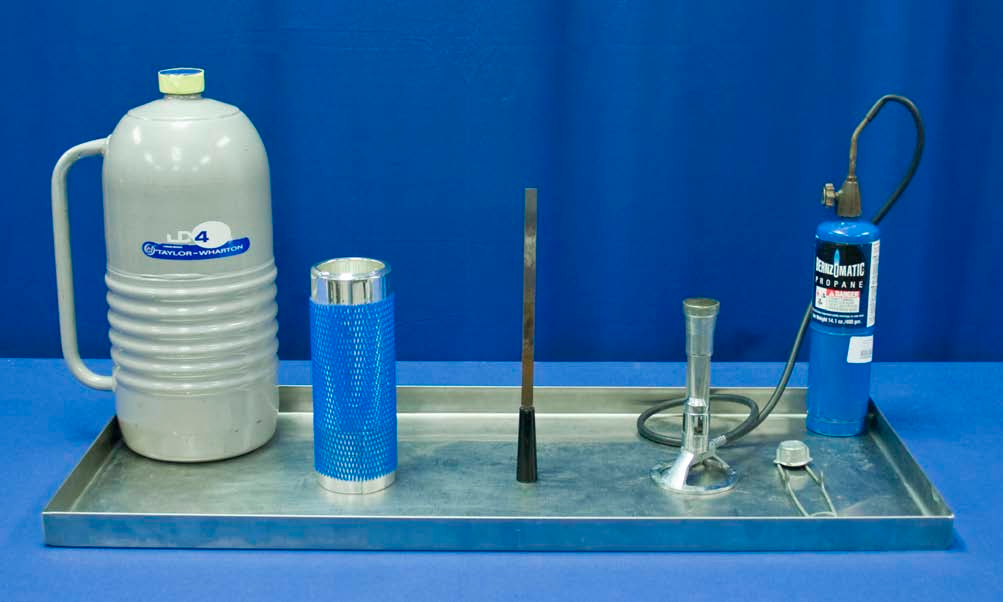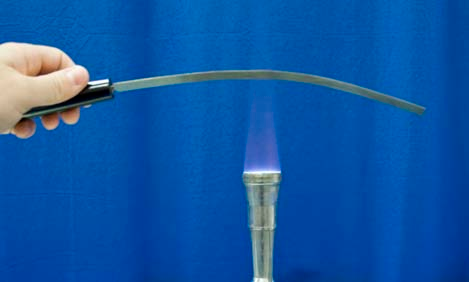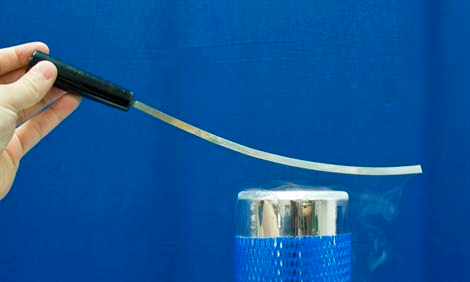


Concept
Thermal expansion results from a change in the average separation distance between atoms as a material changes temperature. As the temperature of a material is increased, so does the amplitude of its atomic oscillations and average inter-atomic distances. Brass has a thermal expansion coefficient approximately twice as great as steel. Thus, brass will experience a greater expansion in its length than steel will for equal temperature changes. A bimetallic strip of steel and brass will thus bend toward the steel upon heating and toward the brass upon cooling.
Procedure
- Show that the bimetal strip is straight at room temperature.
- Light the Bunsen burner with the spark lighter and hold the bimetal strip over the flame for a few seconds.
- Show that the bimetal strip bends to the side with the steel.
- Fill the small dewar flask with liquid nitrogen and dip the bimetal strip in for a few seconds.
- Show that the bimetal strip bends to the side with the brass.
Equipment
- Metal Tray
- Liquid Nitrogen in Dewar
- Small Dewar Flask
- Bimetal Strip
- Bunsen Burner and Propane
- Spark Lighter